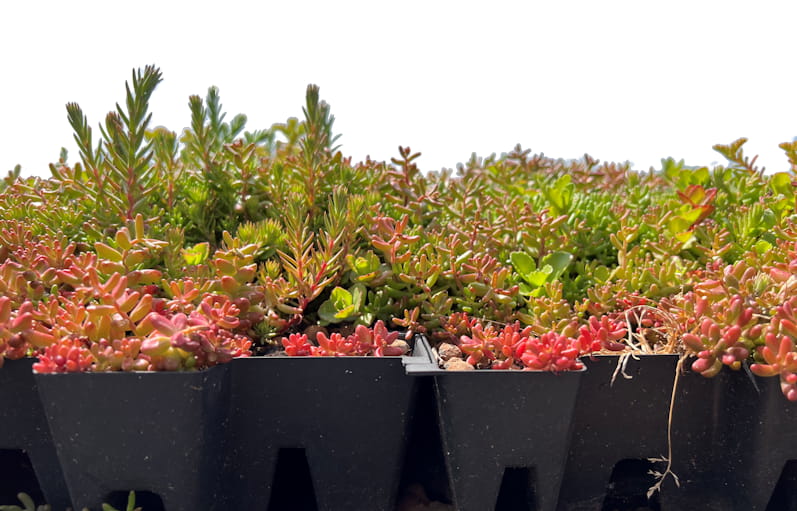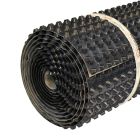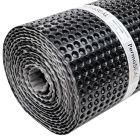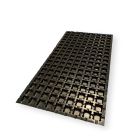Help & Advice Articles, Videos and How-to-Guides
Filter Articles
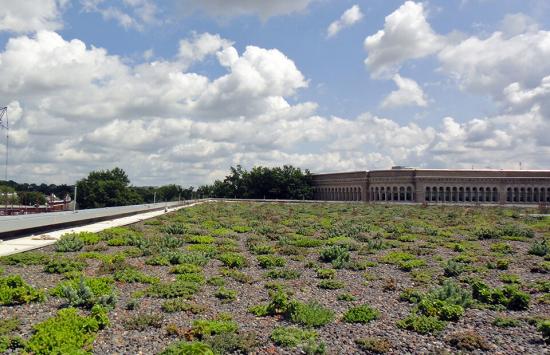
Green Roof Maintenance - A Complete Guide
Green roofs are becoming more and more popular in the UK. With benefits such as a positive environmental impact, increasing roof durability and performance, and cutting energy costs, it’s easy to see why.
When constructed correctly, green roofs are also relatively low maintenance. This means that you can carry on enjoying the benefits of your green roof without having to spend huge amounts of time and money on their upkeep. There are however regular green roof maintenance tasks that need doing to keep your living roof thriving.
In this article, we’ll look at the main green roof maintenance requirements to make sure your green roof continues to look lush and healthy while causing no damage.
Ongoing green roof maintenance
With the right conditions, green roofs are self-regulating, allowing you to enjoy all their benefits pretty much as soon as they’re built and long into the future.
However, all gardens need a bit of pruning and love every now and then. Different seasons, changes in the weather along with other environmental factors can all take their toll. you’ll have to step in every now and again to give your green roof a helping hand.
Luckily, there are some proactive and reactive steps you can take to keep your green roof’s lifespan as long as possible. Here are some tips to do just that.
Plant encroachment on green roofs
Green roof plant encroachment is when plants start to grow where they shouldn’t - most commonly places such as drainpipes, gutters, pebbles and chimneys.
This is normal - plants are a wild entity, after all! However, without intervention, this plant encroachment can cause damage to your roof, and contribute to leaks and blockages in your home’s drainage system.
It’s simple to prevent:
- Keep an eye on any vegetation that is encroaching on unwanted space.
- If you see your sedum or any other plants growing where they shouldn’t, remove it and use it to refill areas on the green roof that lack vegetation.
Green roof plants (most commonly sedum) are chosen for green roofs due to their flexibility to grow in a lot of different areas, so the plants should re-adapt easily to the new space quickly. This means that no plants get removed from the green roof, just relocated.
You should check your green roof for plant encroachment every 2-3 months and move your plants if necessary.
Watering your green roof
A question a lot of green roof owners have is: Do I need to water my green roof? Well, your green roof is a living, breathing, vibrant entity, and therefore, it needs watering to stay that way.
Having said that, there’s a lot of misunderstanding around just how much watering a green roof needs. Too much or too little can cause issues such as leaks, drowning plants and plant loss. So, let’s talk about the best practices when it comes to watering your green roof.
How often should you water your green roof?
If you’re living in the UK, it’s likely you’re living in an area that will experience some pretty wet and dreary weather. While we complain about this weather, it does lend itself well to keeping a green roof fed and watered with little extra input needed from you.
However, the amount of input needed will depend on what plants you have on your green roof. For example:
- Sedum roofs are a lot easier to maintain regardless of the weather and can survive for a long time without water.
- Intensive green roofs that are home to bigger plants such as trees and small bushes are more vulnerable to dryer, sunny weather and may need the odd sprinkle to keep them going.
- The most vulnerable green roofs are those that feature plants such as wildflowers – these can wither quickly without water.
Whatever plants you have on your roof, you should have an irrigation system in place to provide extra water if needed. You’ll need to keep an eye on how long your green roof goes without water when the sun is out. If dry weather lasts for longer than a couple of weeks, you’ll need to be really proactive about watering your plants. Let’s look at how you should water your green roof when there’s no rain.
Watering your green roof after 1 week without rain
If you’re blessed with a week of sunshine, your plants should be fine without extra water - no matter what plants your green roof is home to. Sedum roofs will be absolutely fine, so should wildflower roofs. However, keep an eye on any wilting wildflowers just in case, as they’ll be most vulnerable to a sudden lack of water. If you have a drainage and storage green roof membrane as part of your system, water is stored in the cups of the membrane to help maintain the vegetation through the early parts of any drought.
Watering your green roof after two weeks without rain
Two weeks without rain can start becoming problematic for wildflower roofs. If wildflowers have gone a week without water, they might start to become stressed by the end of the second week. This will be easy to spot - soft, wilting leaves and drooping flower heads are telltale signs. If this is the case, give them a good soaking one evening and check on them the day after.
Intensive green roofs will also need watering at this point.
However, if your green roof is sedum only, it will still be fine after a fortnight. It’s pretty strong stuff, and will most likely be enjoying the sunshine!
Watering your green roof after three weeks without rain
After three weeks without rain, you’ll need to be watering your wildflowers every evening. Intensive green roofs will also need watering.
Remember - it’s important to run the irrigation system at night to avoid evaporation and cause more harm to the plants.
At the three-week point, you should also check your sedum roofs. While sedum can withstand longer time periods without water, it’s around the three-week mark where it might start to become stressed.
For example, if the plants start to look like saggy sacks, it’s time to switch on the irrigation and give them a good soak. However, if the foliage looks red and the leaves have shrunk – don’t worry too much. This is normal for sedum in the sun, and is a natural response to more sun and less water - give it a sprinkle, but don’t overwater.
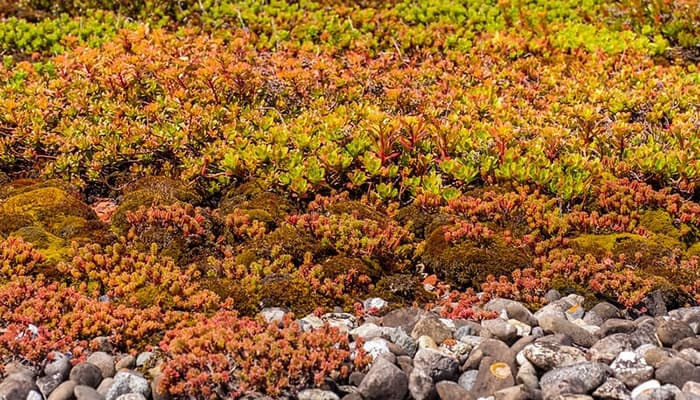
Sedum Roof via Flickr
Watering your green roof after four weeks or more without rain
At this point it’s time to water everything, regardless of whether your roof is sedum, wildflower or home to bigger plants.
But be careful - while this weather is the danger zone for plant loss, it’s also important not to water unnecessarily. For example, if the plants are looking well at the four-week mark, you can leave them a day or two longer before you water them again. Then you can repeat every 2-3 days as needed.
And, as mentioned before, make sure you’re watering at night-time only.
Controlling weeds on a green roof
Green roofs are made to be wild and free - but copious amounts of weeds can disrupt the balance of the ecosystem and make it harder for your preferred plants to thrive. So, when it comes to controlling weeds on a green roof, you need to be aware of which weeds are setting up camp on your roof.
Identify which weeds are growing on your green roof
There are numerous different weeds that will take to your green roof - some of them more problematic than others. That’s why it’s important to know which ones are harmful and can cause damage to your roof, and which ones are nothing more than unsightly.
Tree seedlings
Of all the weeds, tree seedlings are the most problematic on any kind of green roof, no matter if your green roof is extensive or intensive. That’s because different trees have different roots that are stronger and will eventually damage your green roof membranes.
It’s important to identify these and remove them quickly by hand. If left to grow, the roots can be strong enough to damage your waterproofing, causing leaks and damage to your property - both of which can be expensive and tricky to remedy.
This guide helps you learn how to identify tree seedlings.
Most green roofs should have a strong root barrier in place to avoid any real issues with strong roots.
Moss
Moss is a common guest on green roofs, and settles in easily due to its love of damp shade. This makes it inevitable on most roofs - not even green ones.
But if you have excessive moss on your green roof and you’d like less of it, inspect the space and ask yourself:
- Is there an issue with the drainage on the roof that is causing a lot of dampness?
- Has the wet winter made avoiding damp soil impossible?
- Are there shady spaces on the roof during a lot of the day (either caused by sun position, higher buildings or annexes)?
If one of these issues is contributing to the moss growth, there are things you can do to try and combat moss growth.
For example, green roofs that have a deeper substrate can handle other shade-loving plants. By removing the moss and replacing it with plants such as lesser celandine, vinca minor or wood anemone, you’ll find they’ll quickly take up the space of the moss.
For shallow substrate roofs, you may just have to cut your losses with moss. However, it is possible to plant sedum cuttings in the shady parts of your roof. However, this isn’t a long-term fix - while sedum tolerates shade most out of all the succulents that can survive on a shallow substrate, you’ll still need to replace this at least every two years.
Grass
Grass is welcome in parks, fields and sports pitches - but less so on your green roof. That being said, it’s very common to find those green blades of grass on any type of green roof, with wet and damp conditions encouraging it to grow easily.
It is easy to remove - either by hand or by letting the sun kill it off (it’s far less resistant to sun than sedum). Although less aesthetically pleasing, it is good for the biodiversity of your green roof, providing a place for insects such as moths and butterflies to lay larvae. This can make your green roof a far eco-friendlier addition, so consider leaving a patch or two if you can.
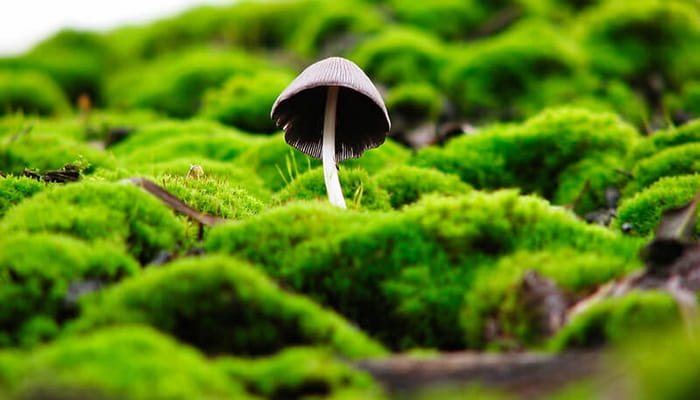
Hans Splinter via Flickr
Maintaining your green roof membrane
If your system uses a green roof membrane, then it is critical to look after it. It allows water to drain safely away, protecting the roots of your living roof while also ensuring no water enters your property or structure.
The most important thing is to ensure that you don’t overwater your green roof. This can cause extra stress on the membrane which in very rare circumstances eventually lead to leaks and breakages. Explore PermaSEAL's professional range of drainage and storage membranes for options designed to deal with higher water volumes.
When setting up your irrigation system, do regular checks to ensure there are no leakages - as this is a common cause of extra stress.
Replacing your green roof membrane
If you find there is substantial damage to your membrane, you may need to replace it. This often means having to replace a lot of the green roof, which can be a lot of work.
If you choose a green roof membrane specifically designed to protect your property from water damage, you shouldn't ever have to replace the membrane again. At Permagard, we sell various types of waterproof membrane that are specially designed to support the growth of your green roof and protect your structure by depressurising the water against it. Just bear in mind that these green roof membranes aren’t the actual waterproof layer that stops water getting into your structure and can’t be classed as watertight. These membranes cover the primary waterproofing layer that provides the watertight seal, such as PermaSEAL PRO MP 2C.
- PermaSEAL PRO 8 Green Roof Membrane – a drainage layer suitable for extensive and intensive green roofs and horizontal drainage below parking decks and walkways.
- PermaSEAL PRO 20P Green Roof Membrane – a water storage membrane as well as a drainage layer. Suitable for extensive and intensive green roofs and horizontal drainage below parking decks and walkways (also compatible with inverted warm roofs).
- PermaSEAL PRO 40 Green Roof Membrane – acts as both a drainage layer and large-volume water storage; provides huge drainage and water storage capacity.
Signs things are wrong with your green roof
Despite all the TLC you give your green roof, sometimes things go wrong. The signs can be hard to spot too (most people don’t tend to spend too much time on the roof!)
It’s therefore important to know the signs that something is wrong. This lets you fix the problems long before they become too difficult to manage. Here we explore some of the most common signs that something’s wrong:
Common green roof problem 1: Plant loss
Plant loss is a common issue on green roofs, and can happen for many different reasons. If you’re noticing gradual or very quick plant loss, let us highlight what some of the issues may be.
Issues with the membrane drainage
Impaired drainage is a common issue for plant loss. It tends to happen when you’ve used an unsuitable membrane or due to improper installation.
Most commonly, it’s the membrane that’s the issue. The drainage membrane allows water to drain safely away, protecting the roots of your living roof. If it doesn’t do this, it can cause your plants to become waterlogged and die off.
Check to make sure there are no blockages and to make sure that the membrane is sufficient.
Foot traffic
Having a green roof isn’t like having a lawn on your roof. In fact, walking over your vegetation can lead to plant loss over time, so if you find yourself spending time on the roof for anything more than the necessary maintenance, this might be the cause of your plant loss.
Living in a windy area
If you live in a very windy area, this can make it difficult for your plants to thrive and grow. Coastal areas are a common example of where windy environments can cause your green roof vegetation to blow away, or stunt growth completely.
This is difficult to manage, as windy environments on roofs are very difficult to shelter. You should ensure that the type of plants you choose are better suited to this type of weather. For example, intensive green roofs with higher plants and even trees are highly susceptible to the wind, whereas lower, sedum type green roofs are less likely to be affected.
If you do live in an area that’s very exposed, the best thing you can do is make sure you select low, rough leaved plants that are less susceptible to things like wind uplift and wind damage.
Choosing the wrong plants for your green roof
Wind isn’t the only element that might affect the type of plants you need on your green roof. In general, if you haven’t chosen the right plants for your green roof, they’ll start to fall away quite quickly. The type of plants you have on your roof should depend on whether you have an extensive or an intensive green roof and how deep your substrate is. The weather and amount of shade available on the roof will also affect how well plants thrive.
This list of drought proof plants from the RHS is a good place to choose the right plants for your green roof.
If you have chosen plants that need more soil space, or that don’t share space well with other plants you’ve chosen, this will also lead to quick plant loss. If you suspect that this is the case, you will need to replace the plants with ones that are better suited to your green roof.
Common green roof problem 2: Droopy plants
Droopy plants are a common issue everywhere - but especially on green roofs. Annoyingly, this is normally down to one of two things: under watering or over watering.
Underwatering your plants
If you suspect that underwatering is the underline problem, the first step is to find out if the roof has been watered recently. If not, and there has been less rain than normal, this is likely to be the case. To test if this is the issue, water the roof manually and see how it reacts the day after. If the plants bounce back, you’ll know it’s because it needed water.
Over watering your plants
If you have been watering the roof and the plants are drooping, it’s likely to be an issue with overwatering. In this case, refrain from watering the roof manually and let nature take its course. If you’re living in a mild climate, you shouldn’t really need to water the green roof too much anyway, as the plants are used to less water in general.
After a few days without extra water, you should see the plants bounce back to their natural state.
Common green roof problem 3: Leaks
A leaky green roof is problematic and very frustrating. It can also cause damage to the property or structure, making for an expensive fix. There are normally a few key reasons why your green roof might be causing leaks.
Root penetration
Root penetration is a serious issue with green roofs, and should be avoided at all costs. Generally, if you’ve chosen the right membrane, the right root barrier and the right plants, this issue shouldn’t affect your green roof. However, sometimes unnoticed alien plant roots can become aggressive and start to grow through the membrane and cause damage to the house. In turn, this can cause leaks when you water the roof or when it rains.
Generally, if this is happening, you’ll need to check the membrane to see if it needs replacing. If it’s punctured, you’ll need to replace the whole membrane system and start from scratch.
Over watering
Your green roof installation should make sure that even when overwatering your green roof, there’ll be no leaks. However, if you over water over a long period of time and the membrane can't get rid of all the excess water, you may find that your roof starts to leak.
If you’re not overwatering intentionally, it may be an issue with the irrigation system. If this is leaking and goes unnoticed, this can cause extra pressure on the roof and the membrane, and may result in leaks if the membranes are low quality. Please bear in mind that a well-designed green roof with high-quality products for each layer and installed correctly, won’t experience leaks because of large volumes of water.
Green roof tray system maintenance
We supply sedum trays here at Permagard, so the advice for watering and maintaining sedum plants outlined above is also relevant to this system. The process of maintaining the component parts of the green roof is different.
Due to the tray’s all-in-one design, in the unlikely event an aspect of an individual tray fails or a leak through the roof occurs, each one can be easily lifted out and replaced. This means that any of the issues outlined above can generally be rectified by replacing a single tray, rather than having to disrupt or replace an element of the entire system.
To find out more about installing and maintaining sedum roof trays, click for our guide.
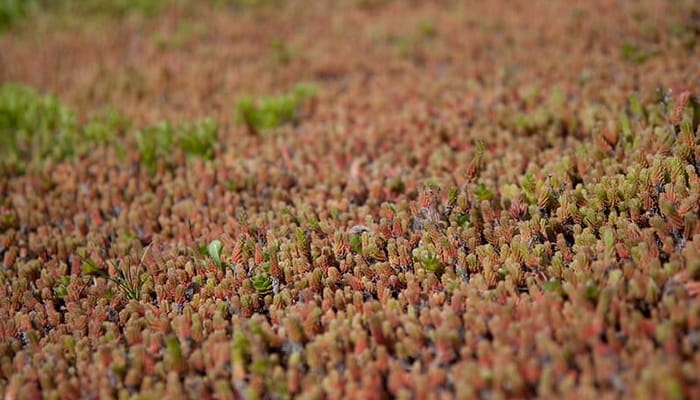
MEC Green Roof via Flickr
The cost of green roof maintenance
Once you’ve invested in the setup of your green roof, there isn’t a huge amount of extra cost involved in its maintenance. If well looked after, you can expect to invest in things like:
- New plants you want to introduce, or new plants to replace natural plant loss
- New substrate/medium that wears away over the years
However, there may be extra maintenance costs involved that will depend a lot on how well you maintain your green roof in general. If you don’t maintain it well, you may need to replace some more expensive parts, such as:
- New membrane (this is a big undertaking and will result in you having to replace a lot of the other components, too)
- New root barrier
With a professional install and by following the green roof maintenance requirements outlined in this guide, you shouldn’t see any problems and you’ll be able to enjoy your green roof for years to come.
Green Roofs with Permagard – Providing Solutions. Inspiring Confidence.
At Permagard, we provide a full range of products for green roof installation and maintenance. Explore our green roof systems or learn more about our Professional Green Roof range for large residential and commercial projects.
Our experts are here to help, so if you have any questions about green roof maintenance, or any replacement parts, then call our technical team on 0117 982 3282.
Main image: Shaw Library Green Roof via Flickr
